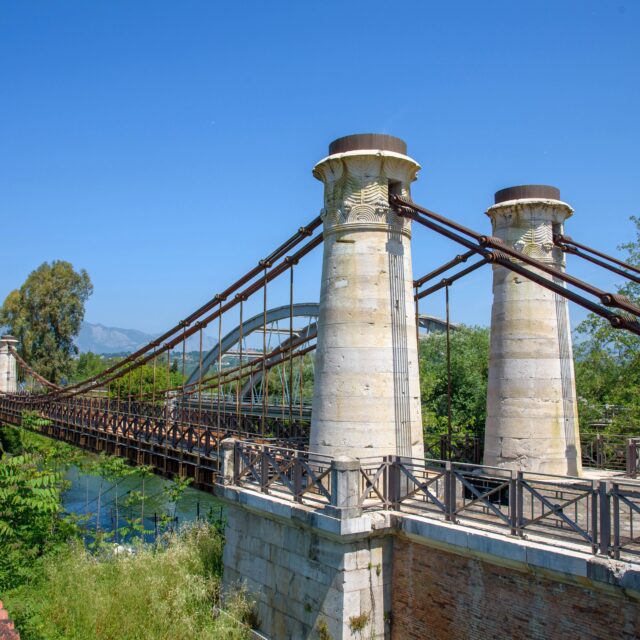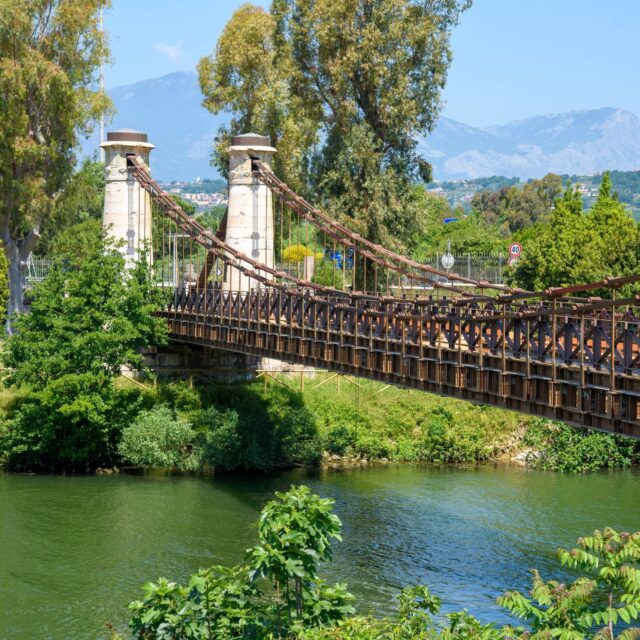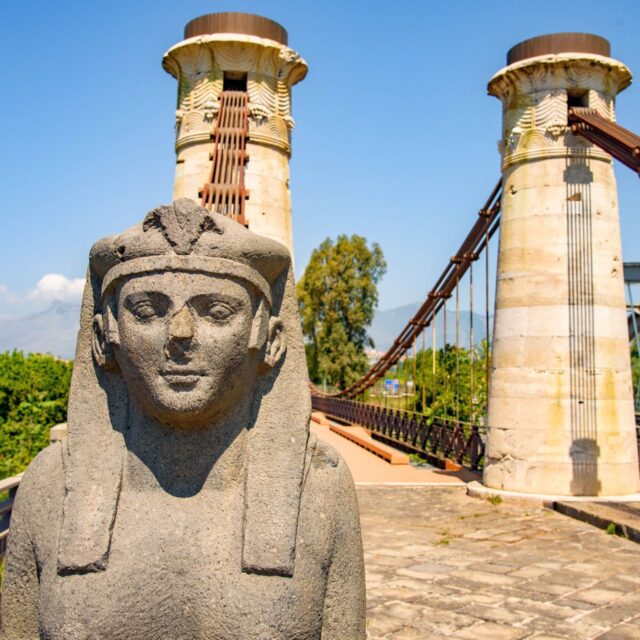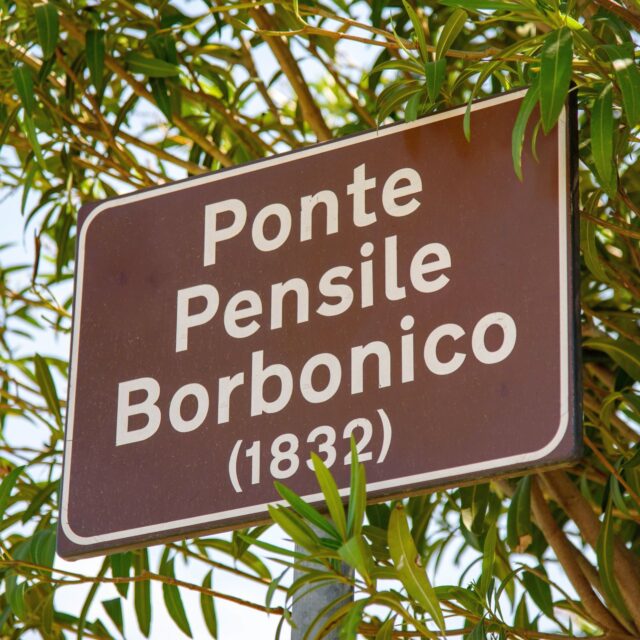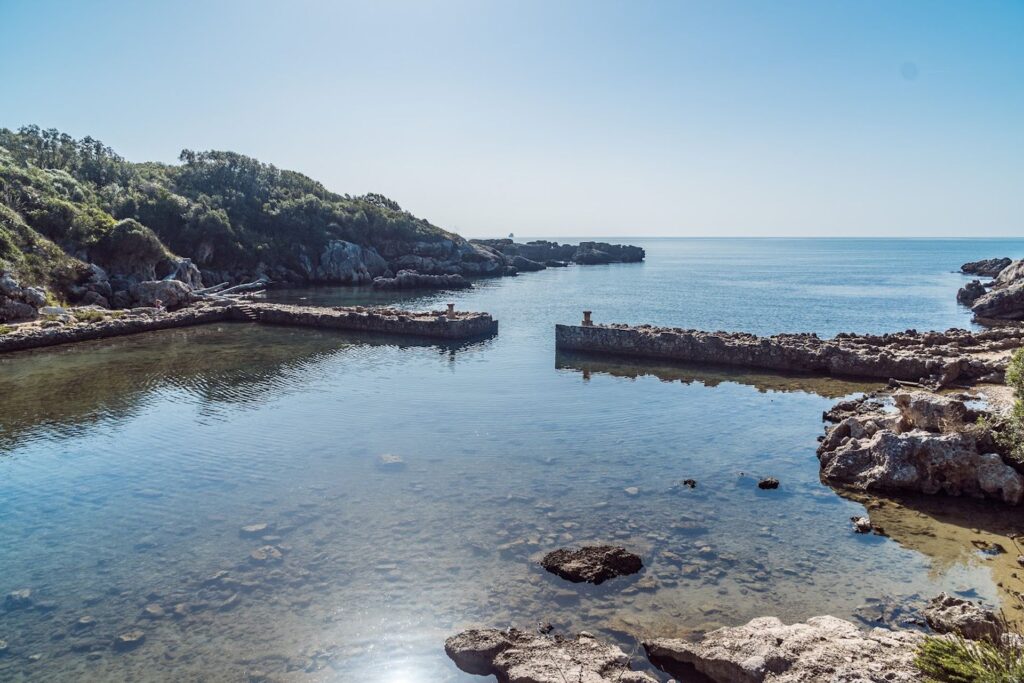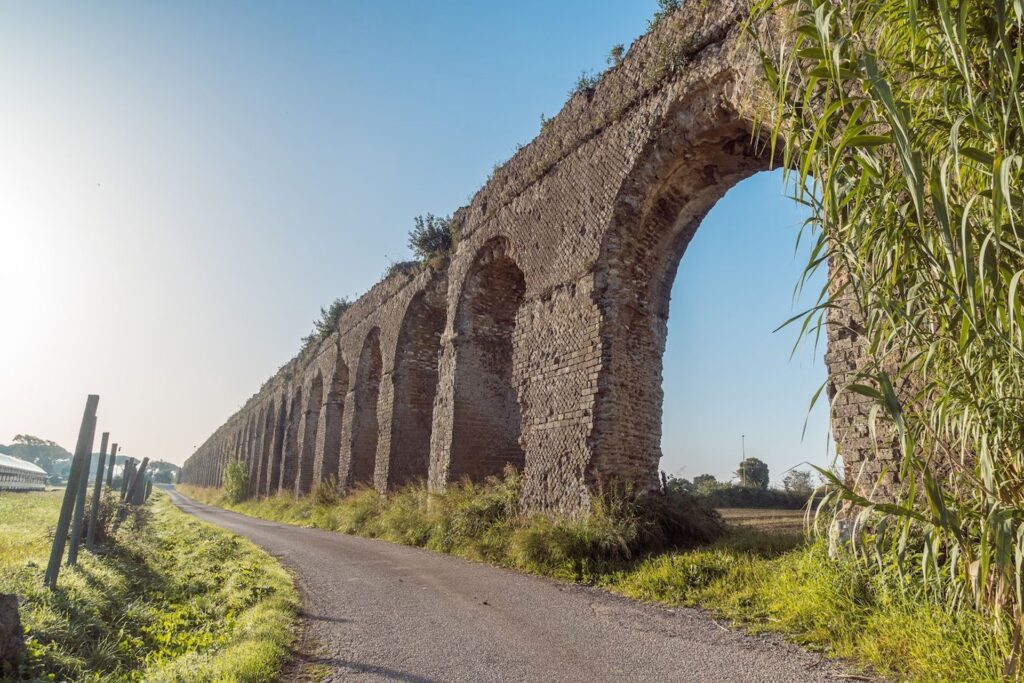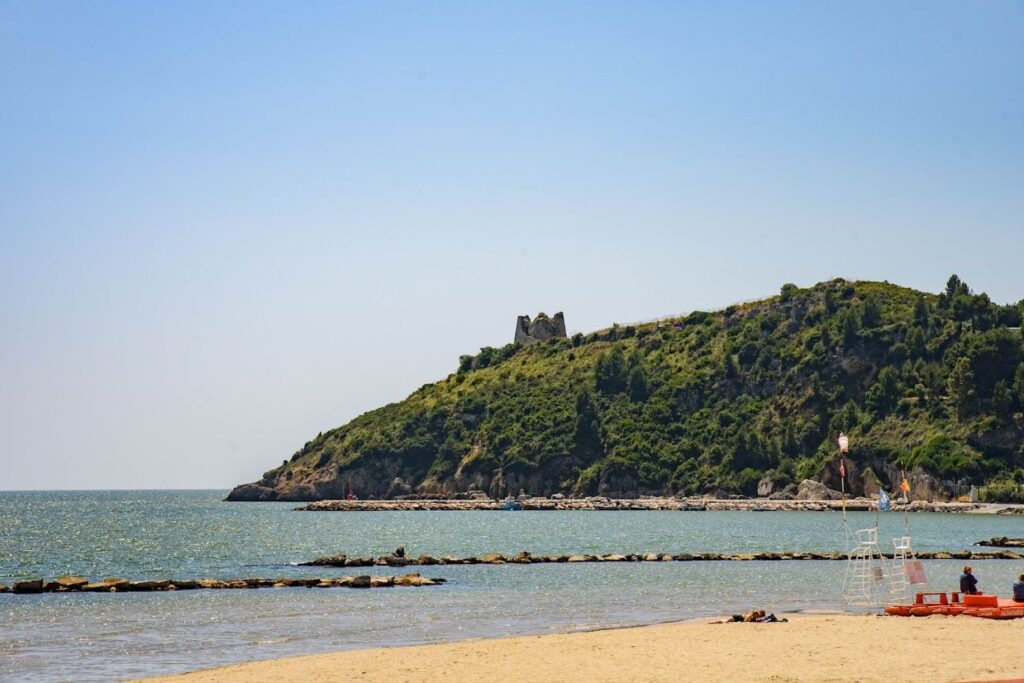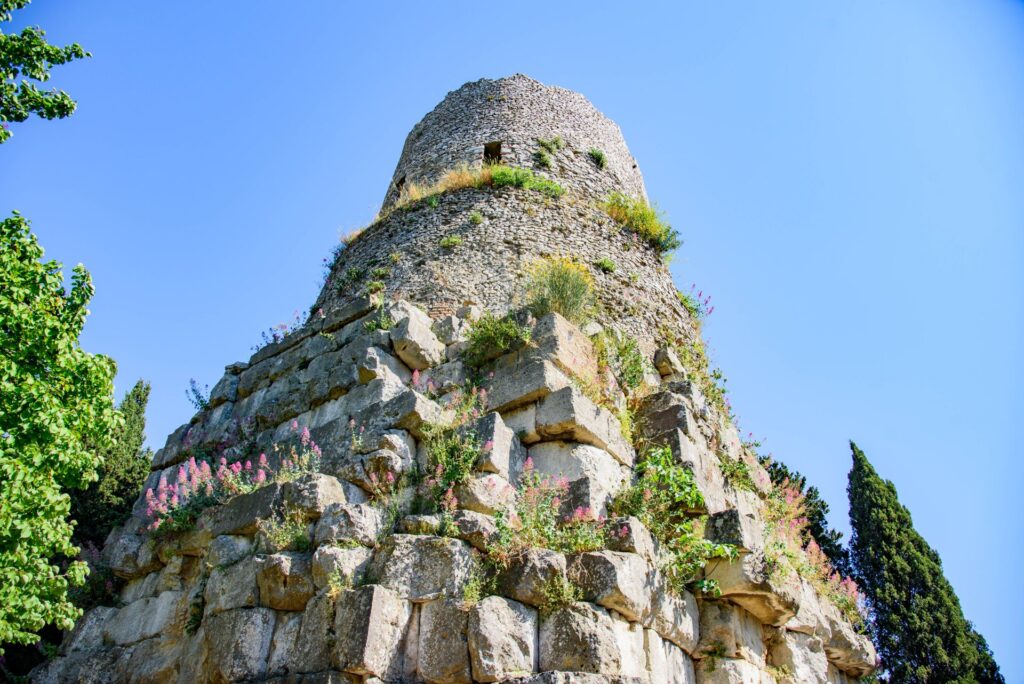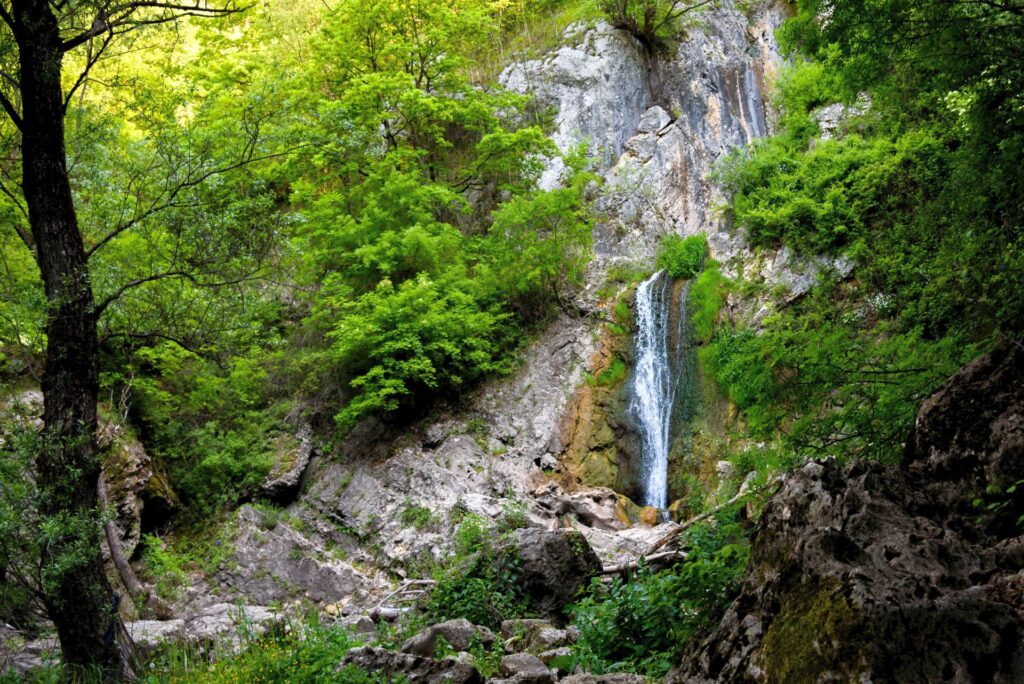Industrial archeology
Minturno
The Royal Ferdinand Bridge
Close to the ancient Via Appia and the Roman city of Minturnae, the bridge was inaugurated in 1832 and dedicated to King Ferdinand II of Bourbon. Today, it connects the Latium and Campania banks of the Garigliano, a river that has been the scene of historical battles since the expansion of Rome.
The Garigliano pass is indeed a symbolic place of the identity of this land and its people; it has seen battles fought whose outcome has helped determine not only the history of Italy but also that of Europe.
Here, in the 4th century B.C., Romans and Aurunci faced each other, in 910 Christians and Saracens, in 1503 Aragonese and Angevins, in 1860 Sabaudis and Bourbons, in 1943-44 Allied troops and Germans during the War of Liberation on the Gustav Line front.
The Ponte Real Ferdinando is the first iron catenary suspension bridge in continental Europe and the first in the world with separate columns, an example of 19th-century industrial architecture, at the forefront in Europe and overseas for the universal innovation in the ‘double inverted pendulum’ device placed inside the capital of each column.
For the construction of the work, engineer Luigi Giura had a nickel alloy specially produced to increase the strength of the iron. He devised a mechanical stiffening of the beams by ‘drawing’, giving unusual resistance to corrosion.
The construction elements were made in the Kingdom of the Two Sicilies, while the decorative elements reflect the “Egyptianising” taste in vogue in Europe at the time, with marble columns, decorated capitals and sphinxes in grey stone surmounting the blocks to which the balancing chains are anchored. The unprecedented synthesis of ancient and new configurations and materials, as well as the masterful engineering solution, make the Real Ferdinando a work of great historical and technical value.
The historical significance of the Ponte Real Ferdinando is no less important if one considers that in 1860 it was the scene of the battle that kicked off the Unification of Italy (with the advance of the Piedmontese on Gaeta) and in 1943 it was incorporated by German troops into the Gustav Line (the last bulwark against the Allied advance towards Rome), who destroyed its deck after having their panzers pass through it.
Severely wounded, the Royal Ferdinand Bridge was restored and rebuilt in 1998, with a community project created on a strong popular impulse.

